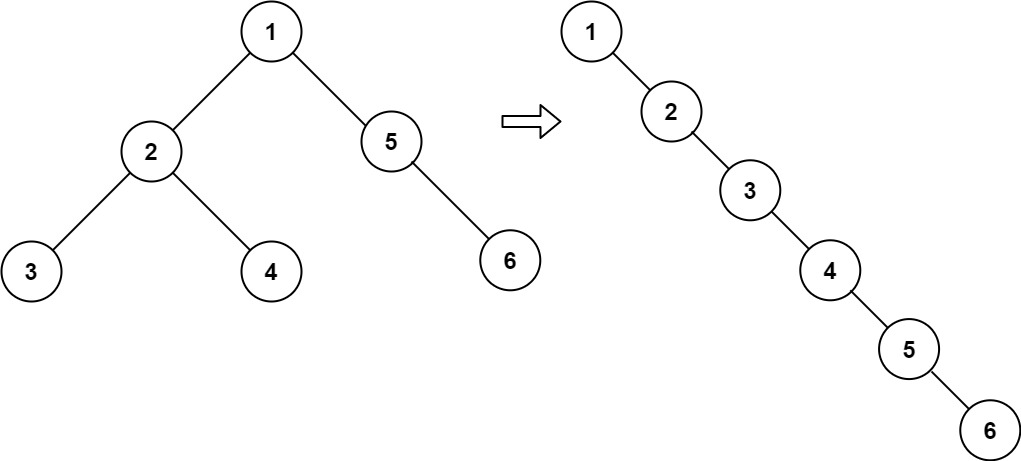LeetCode-in-All
114. Flatten Binary Tree to Linked List
Medium
Given the root of a binary tree, flatten the tree into a “linked list”:
- The “linked list” should use the same
TreeNodeclass where therightchild pointer points to the next node in the list and theleftchild pointer is alwaysnull. - The “linked list” should be in the same order as a pre-order traversal of the binary tree.
Example 1:

Input: root = [1,2,5,3,4,null,6]
Output: [1,null,2,null,3,null,4,null,5,null,6]
Example 2:
Input: root = []
Output: []
Example 3:
Input: root = [0]
Output: [0]
Constraints:
- The number of nodes in the tree is in the range
[0, 2000]. -100 <= Node.val <= 100
Follow up: Can you flatten the tree in-place (with O(1) extra space)?
Solution
/**
* Definition for a binary tree node.
* struct TreeNode {
* int val;
* TreeNode *left;
* TreeNode *right;
* TreeNode() : val(0), left(nullptr), right(nullptr) {}
* TreeNode(int x) : val(x), left(nullptr), right(nullptr) {}
* TreeNode(int x, TreeNode *left, TreeNode *right) : val(x), left(left), right(right) {}
* };
*/
class Solution {
public:
void flatten(TreeNode* root) {
if (root != nullptr) {
findTail(root);
}
}
private:
TreeNode* findTail(TreeNode* root) {
TreeNode* left = root->left;
TreeNode* right = root->right;
TreeNode* tail;
// Find the tail of left subtree, tail means the most left leaf
if (left != nullptr) {
tail = findTail(left);
// Stitch the right subtree below the tail
root->left = nullptr;
root->right = left;
tail->right = right;
} else {
tail = root;
}
// Find tail of the right subtree
if (tail->right == nullptr) {
return tail;
} else {
return findTail(tail->right);
}
}
};

